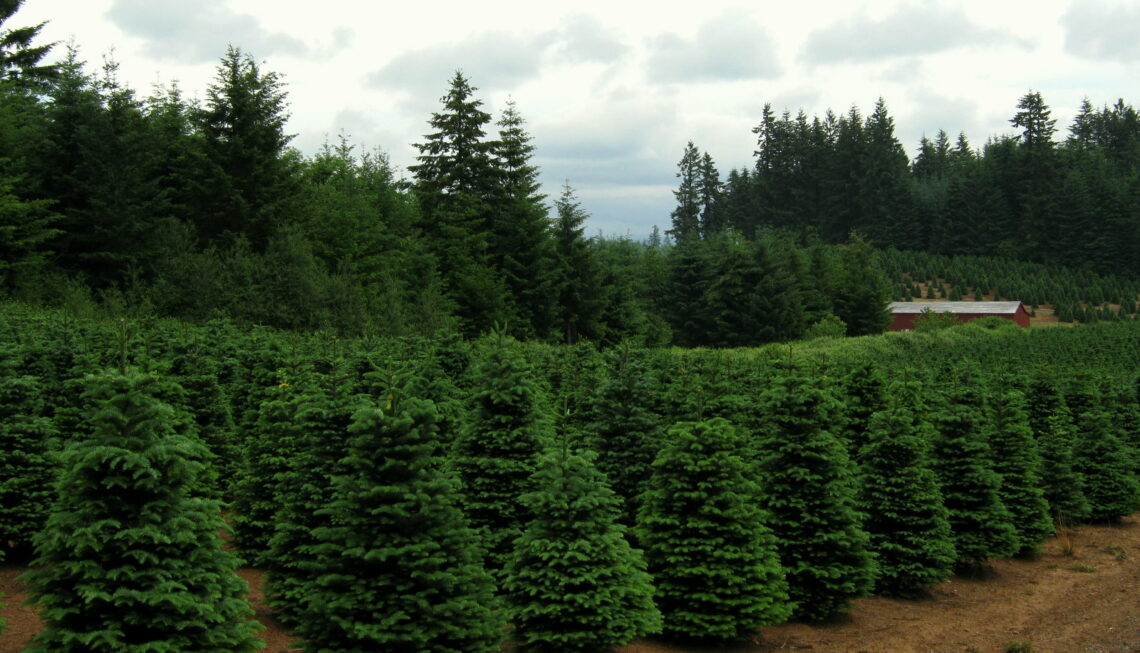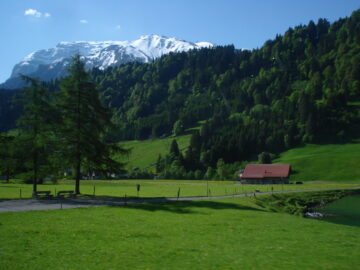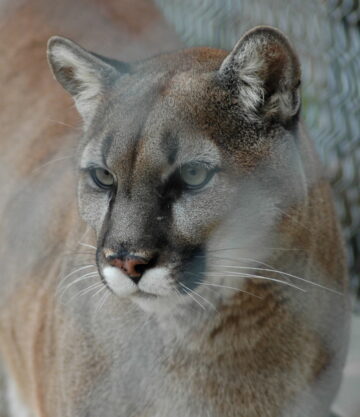GROWING CHRISTMAS TREES
Growing Christmas trees is a very profitable crop to consider for your small acreage. The trees are a low maintenance crop that can be a great side project. Christmas trees can produce a good income for many years.
How Long to Grow to Maturity
Think of planting new trees in a portion of your acreage each year. It takes about eight years to produce most varieties of trees that are five to seven feet tall. Harvest and re-plant to provide a steady income.
How Much Space
You can plant about 1,500 trees per acre. Allow enough room for access roads every 12 to 15 rows and areas for loading. The standard spacing is 5′ x 5′. Most growers will re-plant about 200 trees per acre or one-eighth of their acreage every year.
Pricing
The average price of a tree at a u-cut lot is about $75 and up. With 200 ready-to-harvest trees per acre, that’s $15,000.
Many farmers growing Christmas trees make as much, or more, from selling greens, garlands and wreaths than from their cut tree sales. Wreaths can be simple and affordable, or elaborate and expensive. Some cost as much as $100.
Some growers sell their trees with the help of a community organizations such as Kiwanis or the Rotary Club. Prices are higher than selling to wholesalers.
Cost of Growing
The costs you will incur are mostly for the labor involved in maintenance of your trees. You will need to shear young trees and mow for weed control. Most small growers do their own work and therefore are able to keep most of the profit.
Most growers purchase their trees as seedlings or transplants. The cost of seedlings or transplants is low when you realize that the mature trees can be harvested two years sooner than trees grown from seed.
Low Maintenance
Christmas tree farming is a most attractive crop for the minimal amount of work it requires. For the first four years there is very little work needed. After that, annual pruning will help the trees gain their fuller shape preferred by buyers.
Types of Trees
Douglas Fir
Douglas fir is the most widely grown Christmas tree in the BC. It holds its needles after cutting and is also naturally cone shape. The Douglas fir needs minimal shaping. They prefer a mild growing climate, with well-drained soil. The needles are dark green or blue green, 1 to 1 1/2 inches long, soft to the touch and radiate out in all directions from the branch. The needles are soft and retained for weeks even in warm rooms. They have a sweet lemony scent when touched or bruised.
Norway Spruce
This
is the ‘original’ Christmas Tree and for some people the only tree.
It has short sharp green needles. It does not hold them well and
should be purchased just a week or so before Christmas.
Has an excellent shape, ideal for decoration and have
a nice pine fragrance.
Fraser Fir
Fraser fir is a uniformly pyramid-shaped tree. Strong branches are turned slightly upward which gives the tree a compact appearance. Needles are flattened, dark-green and two broad silvery-white bands on the lower surface.
It has long lasting aroma, soft to touch needles and excellent needle retention.
The Fraser is easier to decorate than some trees due to its firm branches.
Noble Fir
Noble Fir has the best needle retention of all of the Christmas trees. It stays fresh longer in the home because of its ability to retain water and is easy to decorate because of the spacing between the branches. The needles are generally twisted upward so that the lower surface of branches are exposed.
Grand Fir
The
Grand Fir has the best fragrance of all the Christmas trees and it will have
your home smelling like a forest after it is set up. It is bushy and full with
good needle retention. It is the most common and widely available type of
Christmas tree.
It is easily distinguished from other firs by its sprays of lustrous needles in
two distinct rows. They are usually horizontally spread so that both the upper
and lower sides of the branches are clearly visible. The needles are long
with glossy dark green tops and two highly visible white lines on the
undersides.
Nordman Fir
This is the most popular Christmas tree today.
It has a dark green glossy thick needles, full branches and a natural symmetry.
It has a excellent reputation for holding its needles.
Copes better with the very warm and dry conditions caused by central heating.
You Gotta Love The Real Thing
Families with kids love a “cut-your-own” tree farm. It is great fun finding the perfect tree.
The market for live Christmas trees is actually growing. The buying public much prefers ‘the real thing’ to the plastic variety of artificial trees. The number of small Christmas tree farms is growing steadily every year.
If you’re interested in a sustainable and profitable crop, you should consider growing Christmas trees on your small acreage. You will not only make a good income. You will be providing erosion control, wild life habitat and improving the environment. This green business is a win-win for you as well as our planet.




